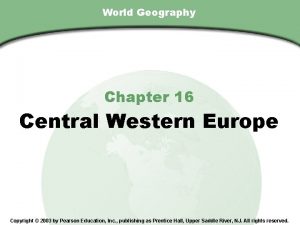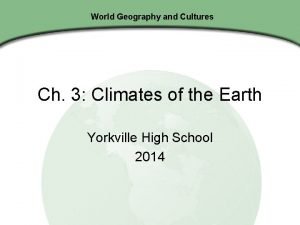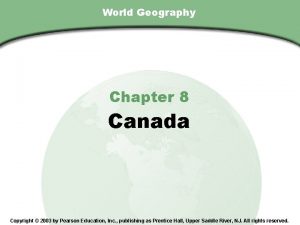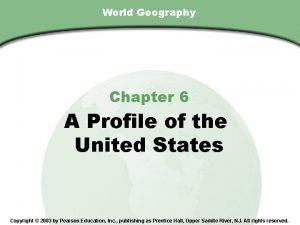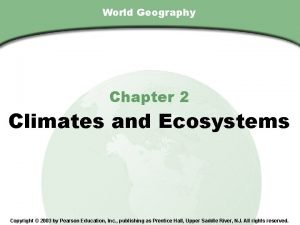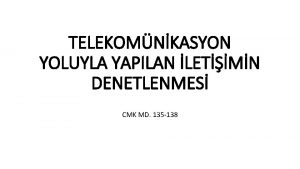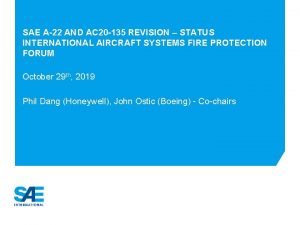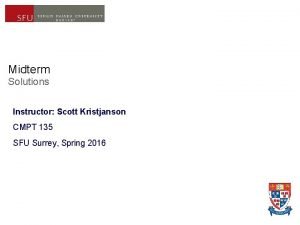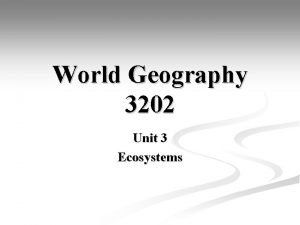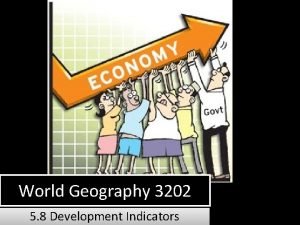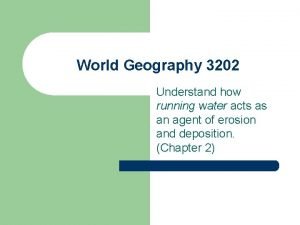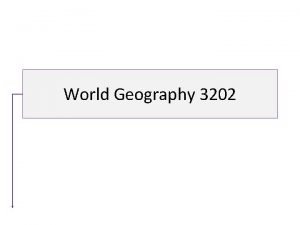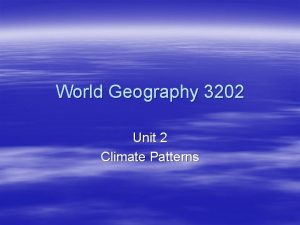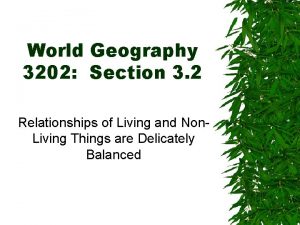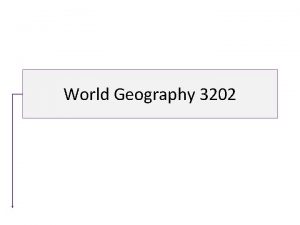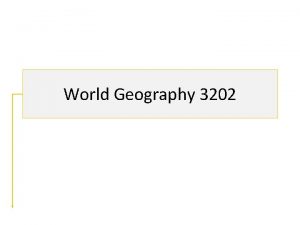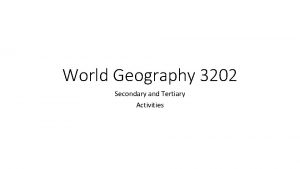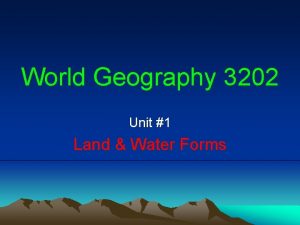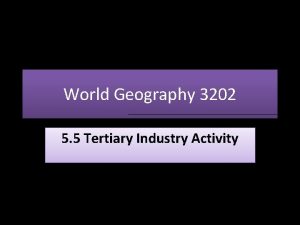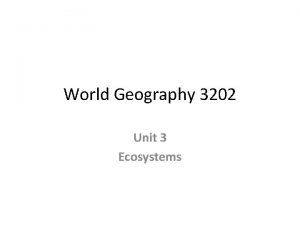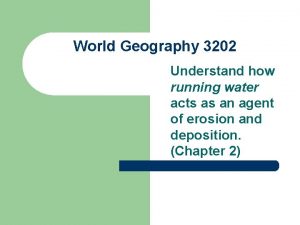World Geography 3202 Chapter 8 pp 135 140

















- Slides: 17

World Geography 3202

Chapter 8 (pp. 135 -140) THE NATURE OF RESOURCES

Soil Characteristics There are several characteristics of soil that affect its value for farming and growing vegetation. 1. Organic Content – Soil fertility is determined as a ratio of the organic content (residues of plants and animals) versus the content of ground bed rock. 2. Mineral content – varies with precipitation because heavy rains tend to leech soils removing minerals from the root region of soil (calcium, magnesium, potassium, nitrogen).

3. Soil Texture – refers to the mixture of fine particles (sand), very fine particles (silt) and extra fine particles (clay). The best texture for agriculture is an even mixture of each.

Soil Profile There are fairly distinct layers within soil. – Top Layer: Dark color & rich in humus. The thickness and quality of the top humus layer is very important for plant life. – 2 nd Layer: Mineral layer deposited from above (calcium, magnesium, potassium, nitrogen) – 3 rd Layer: Weathered bed rock – 4 th Layer: Bed rock

A Soil Profile

Types of Soil 1. Podzol – soils which predominate the boreal forest and tend to be somewhat acidic 2. Chernozem – soils which tend to be the best for agriculture. They are found in grasslands which are semi-arid resulting in less leeching and a mineral rich soil.

3. Latosol – soils which are very infertile due to the high amount of leeching. They are found in tropical rain forests with high amounts of rain which result in leeched mineral-poor soil.

Environmental Factors & Soil 1. Temperature – affects the development of humus. Too cold and the decay of organic matter is slowed considerably. 2. Precipitation – affects the mineral content of soil. – too much rain and minerals are “leeched” down beyond the reach of plant roots. The process of leeching is also called “eluviation”

Soil Texture • Soil texture refers to the size of particles in the soil. – stones are approximately baseball-sized; – gravel is small stones; – sand is fine particles; – silt is very fine particles; – clay is extremely fine particles.

• Soil is predominantly composed of sand, silt and clay. Its texture is determined by the mixture of these three. • The best agricultural soils are an even mixture of all three! • The best mixture of all three (sand, silt and clay) is called Loam.



Consider… • What makes the best soil? a) 40% sand, 20% clay and 60% silt OR b) 30% sand, 60% clay, or 10% silt The answer is A! Remember loamy soil is the best!!

Threats to Soil • Poor soil management: can lead to loss of fertile soil. While the earth's surface is covered in soil the amount of fertile soil valuable for agriculture is limited and is dwindling yearly. • Expanding deserts: grasslands are semi-arid regions with extremely fertile soil. If proper soil management is not practiced these are among the most fragile places. Globally desertification of grasslands adjacent to deserts has been a problem.

• Erosion: agricultural lands on slopes/hills or mountains are very susceptible to water erosion. • Urban expansion: has also been a factor in the loss of agricultural land. People have traditionally settled in rich farmland increasing urbanization is covering up good farmland. • Overgrazing, flooding and deforestation: have led to the degradation of arable land.

• Read pp. 135 -142 (Earth’s Soil Resource)
 Chapter 16 world geography
Chapter 16 world geography World geography chapter 3 climates of the earth
World geography chapter 3 climates of the earth How does wind affect weather and climate
How does wind affect weather and climate World geography chapter 8 section 1
World geography chapter 8 section 1 World geography chapter 6 section 1
World geography chapter 6 section 1 World geography chapter 2 review answers
World geography chapter 2 review answers Ap world history chapter 25 africa and the atlantic world
Ap world history chapter 25 africa and the atlantic world Ap human geography frqs
Ap human geography frqs 5 themes of geography ap human geography
5 themes of geography ap human geography Proruption ap human geography
Proruption ap human geography Jeroesjalajiem lied
Jeroesjalajiem lied Cmk 135/8
Cmk 135/8 Sae a-22
Sae a-22 Hsm 115 uitm
Hsm 115 uitm Cmpt135
Cmpt135 Find the exact value sec(135)
Find the exact value sec(135) Osmotic demyelination syndrome risk factors
Osmotic demyelination syndrome risk factors Aatcc 61-2a
Aatcc 61-2a
